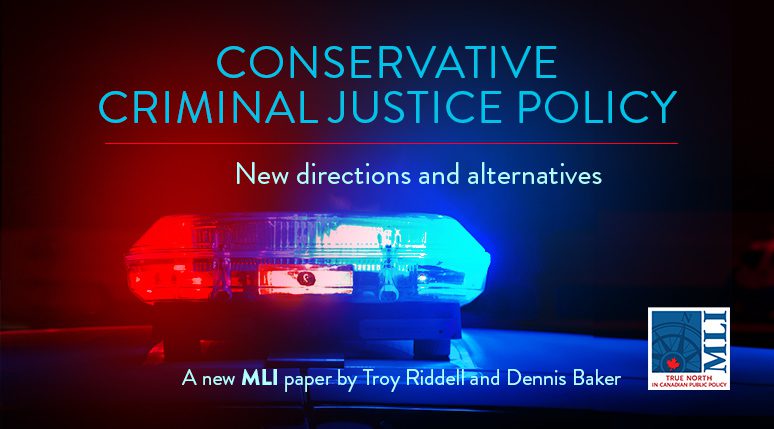By Troy Riddell and Dennis Baker
February 29, 2024
Executive Summary
Aiming to fill a void in the national conversation, this paper lays out the key planks of a credible, principled, ‘small-C’ conservative approach to criminal justice.
However, our use of the term ‘conservative’ should not be conflated with partisan punditry. Our approach eschews simplistic ‘tough on crime’ rhetoric in favour of an approach that has four pillars: the common good of allowing people to live freely without fear of crime; respecting human dignity (for offenders and victims) and instilling responsibility for moral choices; preparing for re-entry as a moral, social, and political duty; and generating legitimacy through accountability.
Our proposals are also attentive to empirical evidence about criminal justice; for example, the policy we lay out takes account of the real-world evidence that suggests the limited benefit of harsher sentences on improving deterrence and public safety. But it also recognizes the value of punishment as a legitimate goal of the criminal justice system and prioritizes the well-being of victims and the community. At times our policy emphasizes individual liberty and a limited state, and in other places recognizes the need for state actors to wield their resources to secure the wellbeing of communities and victims.
The paper is structured as a series of proposals addressing the stages of criminal justice administration: police investigation, pre-trial and bail, the trial and sentencing.
Regarding police investigations, Canada needs a codified set of police powers to help make policing more effective and accountable. This would provide guidance for law-enforcement on contested issues, while also ensuring avenues of police oversight and accountability. We discuss the success of the Police and Criminal Evidence (PACE) rules in England and Wales as a valuable model.
Canada should also adopt an approach that better streams offenders into three possible pathways: one in which diversion is employed, emphasizing responsibility, restitution, and rehabilitation/treatment; another focused on incapacitation, punishment, and treatment; and a third stream directing individuals into mental health services. This would allow the justice system to incorporate the salutary processes of restorative justice where appropriate, while also better serving communities by retaining violent and repeat offenders.
Canada’s sentencing regime needs to be overhauled with a series of guidelines to better structure decision-making but without eliminating discretion when necessary. Cur rently, a lot of leeway is left to judges to hand down individualized sentences. Critics argue that this imperils the “similar sentence” provision in s.718.2(b) of the Criminal Code. The regime in England and Wales, which requires judges to go through a step-by-step analysis in sentencing, is once again a valuable model. The provisions of mitigation in place for marginalized communities should also be revised. A better system would list possible mitigating factors in the sentencing guidelines and make them available to all individuals. This could also help redress the disproportionate incarceration rates of Indigenous and other disadvantaged groups.
The core principle of Canada’s corrections regime should be the gradual release of most offenders, facilitating self-improvement for offenders while in custody. Nevertheless, Government has a moral responsibility to incapacitate the small population of unrepentant, violent, and repeat offenders. Respect for human dignity requires acknowledging people can reform and be worthy of forgiveness, but it is also affirmed by treating some heinous choices as warranting separation – for life if needed – from the rest of Canadian society.
Read the full paper here:







